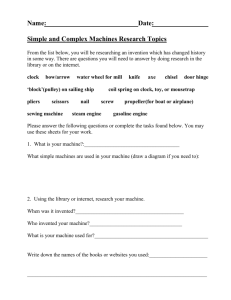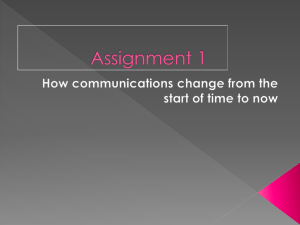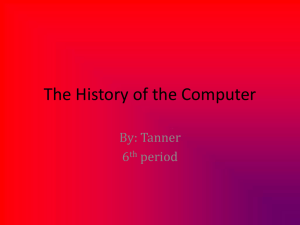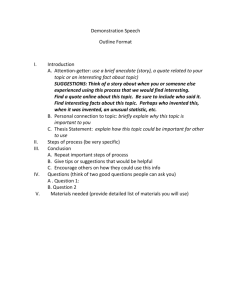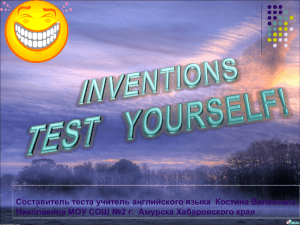Communication Process/Media History
advertisement
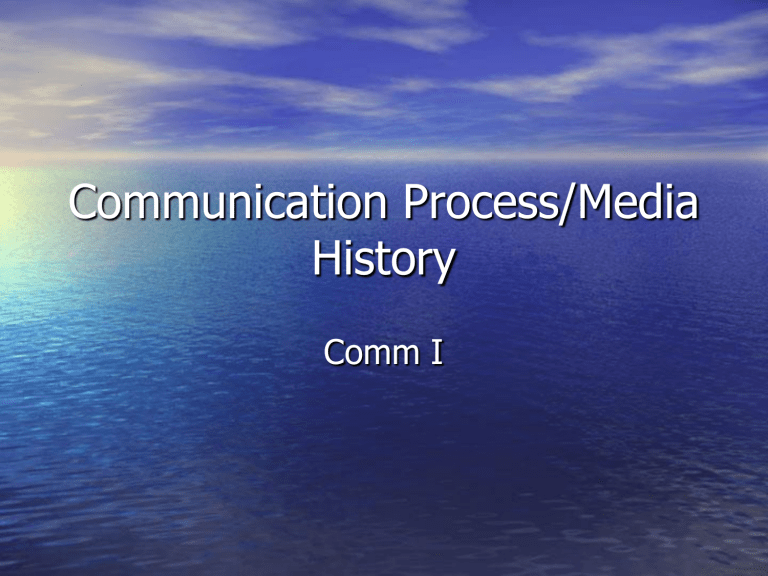
Communication Process/Media History Comm I • Receiving and transmitting information contained in sounds, images, and sensations of everyday life Communication Environment • The way we communicate acoustically and visually • Communication Behavior • Communicating with those around us (limited audience) • Interpersonal Communication • Communicating with an extensive audience via mass media (tv/newspaper/radio/internet) • Mass Communication Shannon-Weaver Communications Model • Sender • Information • Medium • Receiver • Feedback • Noise • Anything that interferes with the communication between sender and receiver – Examples? • Symbol – High-correspondence symbol – Low-correspondence symbol • Referent • Ex’s of symbols/referents? • Used movable type; allowed books to become first mass medium • Printing press • Sound-producing machine invented by Edison; precedes record player • phonograph • A transparent film invented by Goodwin • celluloid • Decorated or illustrated text • Illuminated manuscript • An early paper similar to parchment, invented circa 2400 BC • papyrus • Introduced in 1983, followed cassette tapes as the preferred method for music recording • CD • Roman method of book binding, used cords to tie sheets of parchment between wooden boards • Codex • Invented in 1844, transmits messages and signals using electric pulses, allows communication across great distances; precedes telephone • telegraph • Allows instant access to information, news, music, and people • Internet • Introduced in 2002, a subscription service similar to cable TV; two major providers merged in 2008 • Satellite radio • First typesetting machine invented by Mergenthaler in 1880 • Linotype machine • Followed records as preferred medium for music recording, used from mid 1970’s to mid 1980’s, now obsolete • cassette • Introduced at the 1939 World’s Fair, has become most popular and accessible form of mass media; used for information, entertainment, and escape • television • Introduced in 1996, capable of storing 7x more information than a CD, followed VHS as the preferred method of film recording • DVD 2400 BC-1453 • Oral communication • Papyrus • 1st known alphabet • Writing materials advance from clay tablets to wood-pulp paper • codex 1453-1840 • Gutenberg’s printing press, movable type • Books become 1st mass medium • Free press as foundation for democracy • Colonial newspapers • 1st magazine 1840-1900 • Telegraph • Phonograph • Linotype machine • Celluloid • Literacy rates boom • Books, newspapers & magazines become vital part of American society 1900-1940 • Industrial revolution • WW I • Great Depression • Radio becomes a full-fledged mass medium (Golden Age of Radio) • Public relations spurs U.S. into WWII • Muckraking journalists focus on social issues and big business 1940-1980 • FCC sets TV starndards • Television networks promote shared culture and • • • • social movements Social issues take the forefront in broadcast television Popularization of VCR Expansion of cable Defense research leads to communications satellite technology and beginnings of Internet 1980-2014 • • • • • • • • Cable TV explodes The Internet becomes mass medium Computers become common in most homes Email MTV and CNN introduced Mass media are deregulated (media fragmentation occurs) Telecommunications Act of 1996 discards most ownership limits- corporate media dominate Social media – facebook, instagram, etc.
